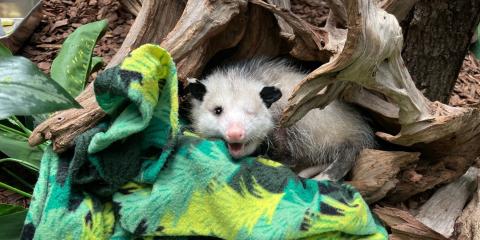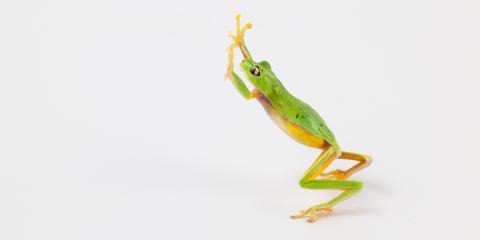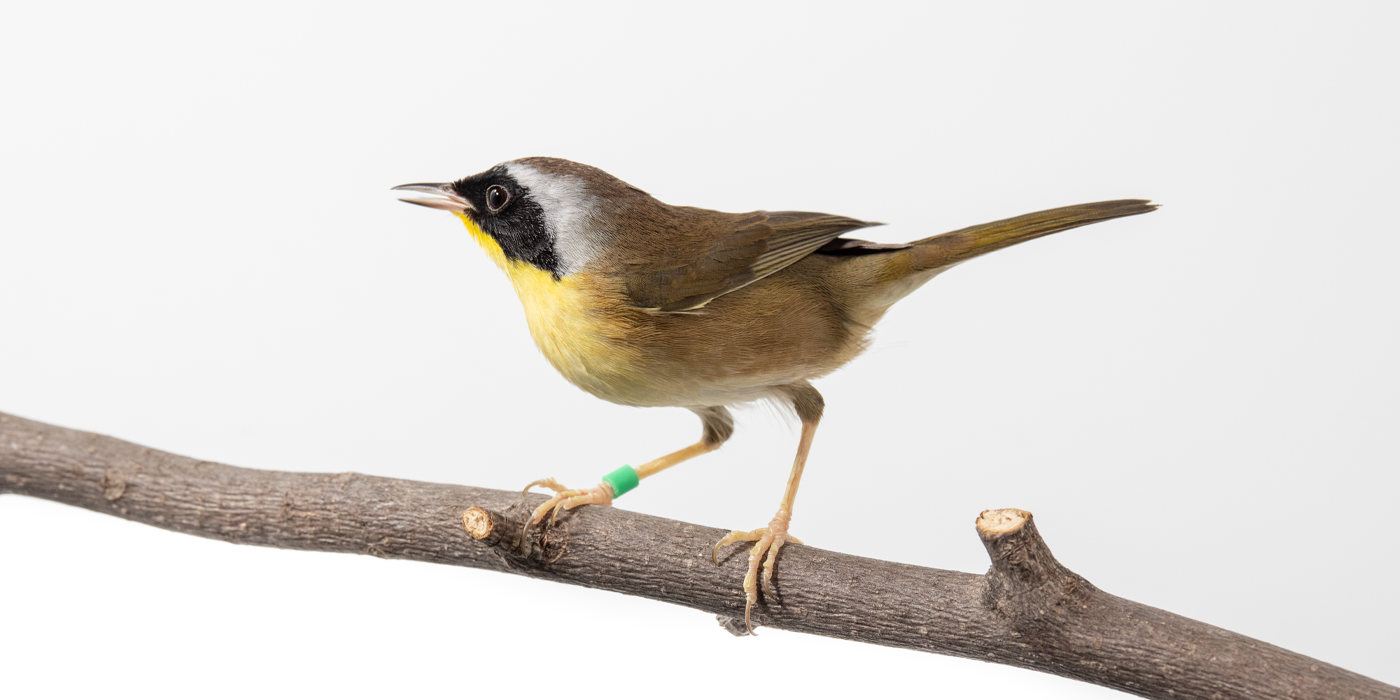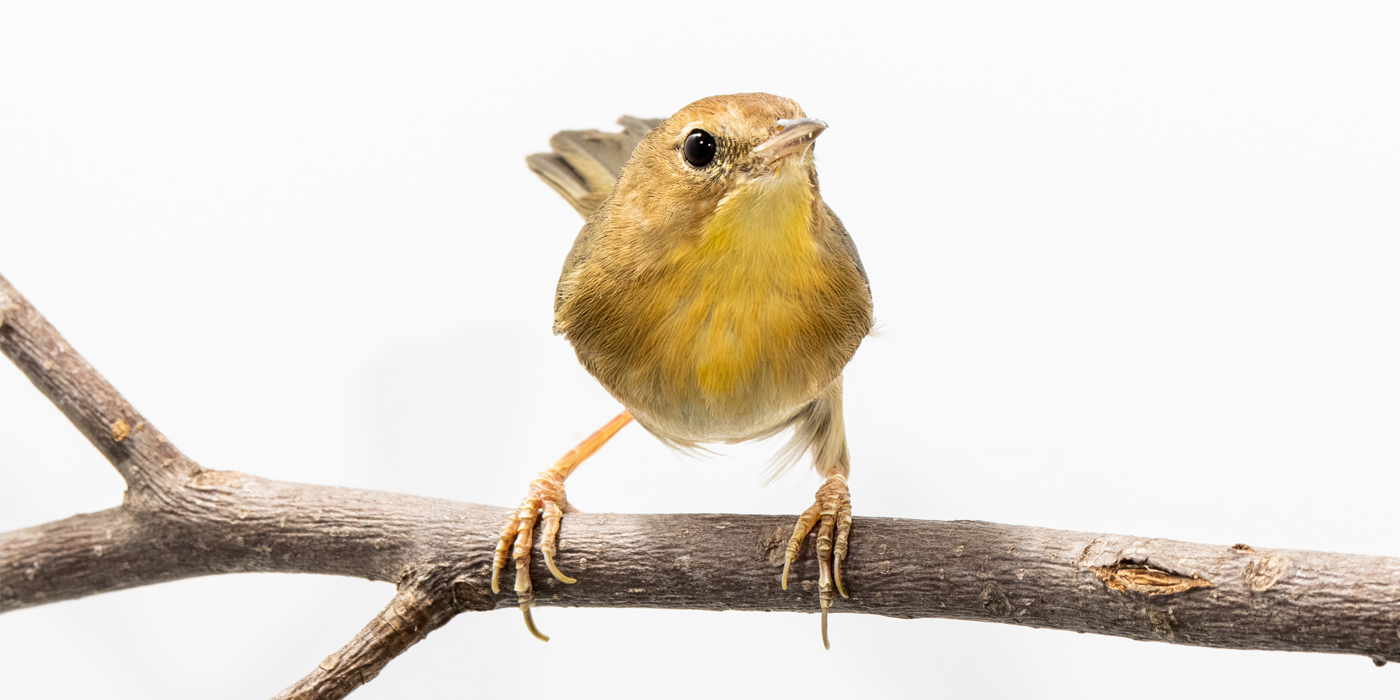This small, chunky songbird has a summer range that stretches across the United States and Canada. Males and females look different, but they both have the eye-catching yellow throat coloring that give the species its name.
Physical Description
This small warbler has a plump stomach, a sharp beak and a medium-length tail. Although there are regional color variations, males can be identified by their bright yellow throats, black mask around the eyes and face, olive-brown upperparts and pale coloration on their bellies. Females lack the black mask of males, with brown coloration on their faces instead.
Size
Fully-grown adults are 4.3–5.1 inches (11–13 centimeters) long and weigh about one third of an ounce (8.5 grams).
Native Habitat
Wet, open areas like swamps, marshes,and along streams. Often seen among dense thickets, where they build their nests. During migration, they pass through a wide range of habitats, including forests, parks and suburban backyards.
Lifespan
Common yellowthroats live for a year or two. Some birds can reach up to 11 years old.
Communication
Males sing their witchety-witch song to defend their territory and attract potential mates.
Food/Eating Habits
Common yellowthroats eat mostly insects, which they either pick from plant leaves or snatch from mid-air. In the wintertime, they incorporate more fruits into their diet.
Sleep Habits
Common yellowthroats active during the daytime.
Social Structure
Common yellowthroats pair with a mate during the breeding season, but spend the winter months alone. During migration, they will join mixed-species flocks as they travel.
Reproduction and Development
After a brief courtship phase, males and females pair up to raise their young. Males arrive to their breeding grounds a week or two ahead of females. Females search among tangles of shrubs and weeds for a well-hidden place to build their nest, which is cup-shaped and made of grasses and other plant material. The female sits on the eggs, which are creamy white with black and brown spots, for about two weeks while the male brings her food. After the babies hatch, both parents take turns bringing them food until they are ready to leave the nest after eight to ten days.
Conservation Efforts
These birds are abundant in the United States, but habit loss and draining of wetlands (their preferred breeding territory) threatens their long-term survival. Also, like many birds who migrate mainly at night, they at risk for collisions with hard-to-see, human-made objects like television towers and reflective buildings.
Help this Species
- Reduce, reuse and recycle — in that order! Cut back on single-use goods, and find creative ways to reuse products at the end of their life cycle. Choose recycling over trash when possible.
- Be a smart consumer. Choose products made with sustainable ingredients, such as Smithsonian certified Bird Friendly coffees, which support farmers striving to limit their impact on wildlife and habitat.
- Choose your pets wisely, and do your research before bringing an animal home. Exotic animals don’t always make great pets. Many require special care and live for a long time. Tropical reptiles and small mammals are often traded internationally and may be victims of the illegal pet trade. Never release animals that have been kept as pets into the wild.
- Be a responsible cat owner, and keep cats indoors or under restraint when outside. Never release animals that have been kept as pets into the wild.
- Organize or attend a stream, river, lake or other waterway cleanup in your area to preserve aquatic habitats for local species.
- Conservation starts with you! Join a citizen science project, such as FrogWatch or Neighborhood Nestwatch, where you can help collect valuable data for scientists. Encourage your friends and family to get involved too.
- Protect local waterways by using fewer pesticides when caring for your garden or lawn. Using fertilizers sparingly, keeping storm drains free of litter and picking up after your pet can also improve watershed health.
- Plant native flowers in your garden to help feed resident and migrating pollinators. You'll make your lawn beautiful and help wildlife at the same time!
Animal News

May 06, 2025
Remembering Basil, Our Virginia Opossum

May 02, 2025


